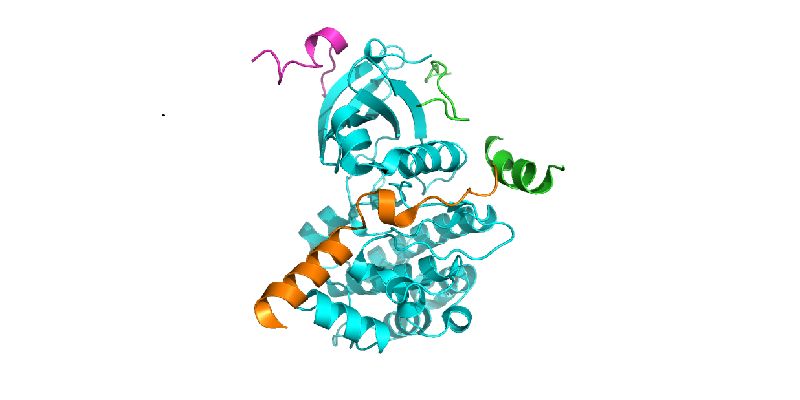
The University of Leeds has secured a £5.4 million grant to identify new techniques for investigating and manipulating the chemical building blocks of life - proteins.
The five-year project - in collaboration with the University of Oxford - will lead to a better understanding of fundamental biochemical processes and will identify new research strategies for tackling cancer and other diseases.
Andy Wilson, Professor of Organic Chemistry in the School of Chemistry at Leeds and principal investigator, said: “The goal of this project is not only to get a better understanding of the way proteins work - but to establish how to disarm the ‘rogue’ behaviour of some proteins that lead to disease.”
The research is being funded with a grant from the Biotechnology and Biological Sciences Research Council, a part of UK Research and Innovation.
Why proteins are so important
Proteins are the chemical workhorses that give cells their shape, structure and function. They are large molecules which can perform a range of cellular operations.
Although many regions of proteins adopt a fixed 3-D structure, many proteins found in the human body are able to change shape. This ‘shape-shifting’ enables proteins to perform a range of different functions at different times.
The ‘shape-shifting’ is linked to a part of the protein structure known as an intrinsically disordered region (IDR). The IDR changes shape and therefore its local interactions, dependent on the role it has in the cell at that particular moment.
The focus of the research project is to understand the mechanisms by which groups of IDRs change shape, revealing the role they play in a healthy cell and in the development of disease.
Understanding Aurora-A
The research project will investigate how a protein called Aurora-A is controlled by interactions involving IDRs. Aurora-A plays a role in several cellular processes that are relevant to human disease, including cell division, gene expression and the function of a hair-like projection from the cell surface called the primary cilium.
The involvement of Aurora-A in each process is dependent on a different shape-shifting protein interacting with it, but it is unclear how most of these interactions serve to control Aurora-A or how these different roles are coordinated.
Aurora-A is of major interest of Richard Bayliss, Professor of Molecular Medicine at Leeds and a co-investigator on the research project.
Professor Bayliss said: “My team and others have been studying these individual interactions one-by-one for a long time.
“This transformative project will enable us to understand how they fit together to produce a network that governs Aurora-A’s many cellular roles.”
Professor Wilson added: “We will deepen our understanding of the way Aurora-A is affected by changes in the shape of the proteins that interact with it.
“Our aim is to develop new chemical and biological tools that will allow us to regulate the interaction of specific shape shifting proteins so we can identify the role they play in controlling Aurora-A.
“By establishing the molecular processes that are most relevant to disease development and which shape-shifting proteins control these processes, targeted drug discovery efforts could be developed.”
Collaborative research
In addition to Professor Wilson and Professor Bayliss, the research team includes other investigators based at Leeds who bring a wide range of expertise to the project: Dr Megan Wright, Dr Takashi Ochi, Dr Darren Tomlinson and Professor Sheena Radford, from the Astbury Centre for Structural Molecular Biology, and Professor Colin Johnson, in the School of Medicine. The final team member is Dr Fanni Gergely, a senior researcher and a leading cancer cell biologist based at the University of Oxford.
Professor Bayliss said: “To tackle challenging scientific projects needs great team work, and we are fortunate to have so many outstanding colleagues who will contribute to our effort.”
The academic scientists will work closely with industrial partners AstraZeneca and LifeArc to ensure rapid translation of research findings into drug discovery.
The researchers believe a better understanding of IDRs will have impact beyond cancer biology in many areas of biology including regulation of crop growth, cardiovascular biology and ageing.
Further information
Image credit: Professor Richard Bayliss. Illustration shows Aurora-A (light blue) and its three protein partners.
For further details, please contact David Lewis in the University of Leeds press office: d.lewis@leeds.ac.uk